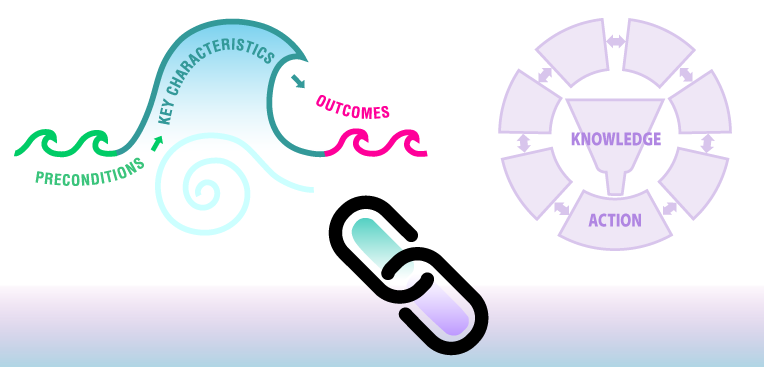

Linking this phase to the elements of the Social Movement Action Framework
You and your change team’s capacity in the ‘Select, Tailor, Implement Interventions’ phase may be enhanced and/or accelerated by the addition of some of the elements of the Social Movement Action (SMA) Framework, as the two frameworks are complementary and used together accelerate change uptake and sustainability. In addition to the linking example described earlier in this section, there can be many other points of connection between the two frameworks. Below are three more examples for your consideration:
- Social movements and their exemplars are visible: By understanding social movements, their exemplars and strategies; you and your change team may identify strategies that were used in social movements that can also be applied to this KTA phase. For example, mobilizing individual and collective action involves people coming together to collaborate for a shared purpose. Applying social movement thinking and their exemplars to selected, tailored and implementation interventions may strengthen the approach to change.
- Public visibility: One key component of the social movement action framework is to increase public visibility of individual and collective actions. You and your change team can use public visibility as a strategy to spotlight your practice change. Public visibility, such as using social media increases awareness, adds credibility to the change and supports the building of a critical mass of stakeholders engaged in the change (Serna-Restrepo, et al 2018).
- Momentum: You and your change team may consider engaging key stakeholders to build momentum when you mobilize your practice change. Momentum, a key component in social movements, is created through strategic planning and a group of people who are actively engaged in the change. Momentum acts as a force of energy that fuels change; in contrast, when absent (i.e., a state of inertia), the lack of energy surrounding the change may negatively impact the uptake of the practice (Serna-Restrepo, et al, 2018).
For more discussion about the dynamic links between the elements of the SMA Framework to the KTA Framework, see the section ‘Accelerate your success with the Leading Change Toolkit™’.
Getting Ready for Next Phase: Once you implemented the practice change in your setting, the next phase is to monitor the uptake of this practice. Are the providers using this practice? Have the knowledge, attitudes and beliefs of stakeholders changed as a result of this new knowledge/practice? What is the degree to which the intervention is delivered according to the original design and plan? These are important questions to answer when you implemented a practice change in your setting.
